You might know of a few different melon varieties, but you know all of the differences between a muskmelon vs cantaloupe? Technically speaking, all cantaloupes are technically muskmelons, but not all muskmelons are cantaloupes. But in what other ways do these two melons differ from each other, and which one is better for your lifestyle and diet?
In this article, we will compare and contrast muskmelons and cantaloupes so that you can fully understand the differences between these two fruits. We’ll go over their physical descriptions as well as what they are typically used for, and we will even go over where these two melons originated. Let’s get started and talk all about Cucumis melo now!
Comparing Muskmelon vs Cantaloupe
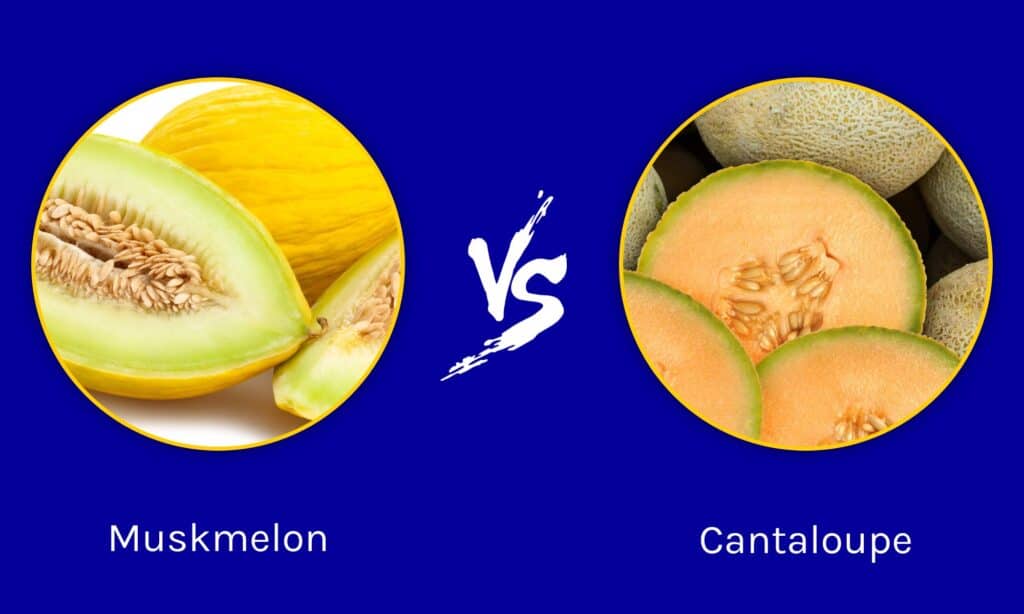
| Muskmelon | Cantaloupe | |
|---|---|---|
| Plant Classification | Cucumis melo | Cucumis melo |
| Description | Varies in appearance and flavor, as it refers to any melon belonging to the Cucumis melo classification. Often has a musky smell, but some varieties do not. Rind is wrinkled, smooth, or textured, and the fruit can be flavorful or boring | Tan colored exterior covered in unique netting or ridges. Melon is oval shaped and round, with a light green rind. The fruit is a pleasant light orange color, with a dense cluster of seeds in the center. Fruit tastes sweet, and has a pleasant texture and flavor |
| Uses | Eaten around the world, as there are a number of varieties associated with this name. High in nutritional content, especially for the caloric content | Popular around the world as a snack and salad accompaniment. Cantaloupe gelato is also popular and it is frequently paired with cured meats. Contains high levels of vitamin C and A |
| Origin and Growing Preferences | Unknown origin, but there is evidence of long-time trading of melon varieties. Most melons grow best in full sun and well-fed soil | Might have in South America or Asia, but became popularized in Europe; thrives in full sun with nutritious soil, and spreads easily |
Key Differences Between Muskmelon vs Cantaloupe
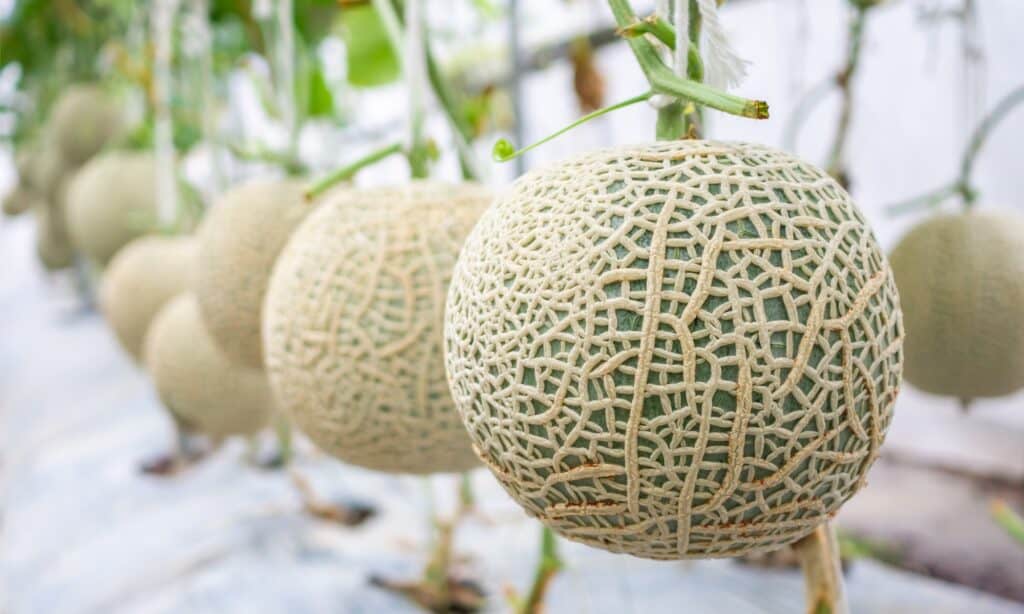
There are far more muskmelon types compared to cantaloupe types.
©iStock.com/Kwangmoozaa
There are only a few key differences between muskmelon and cantaloupe. For example, all cantaloupes are technically muskmelons, but not all muskmelons are cantaloupes. In addition, cantaloupes have a distinctly textured exterior, while some muskmelon varieties are smooth. The average cantaloupe is light orange inside, while some muskmelon varieties are white or green inside. Finally, cantaloupes have a distinct smell to them, while some muskmelon varieties do not smell.
Let’s go over all of these differences in more detail.
Muskmelon vs Cantaloupe: Classification
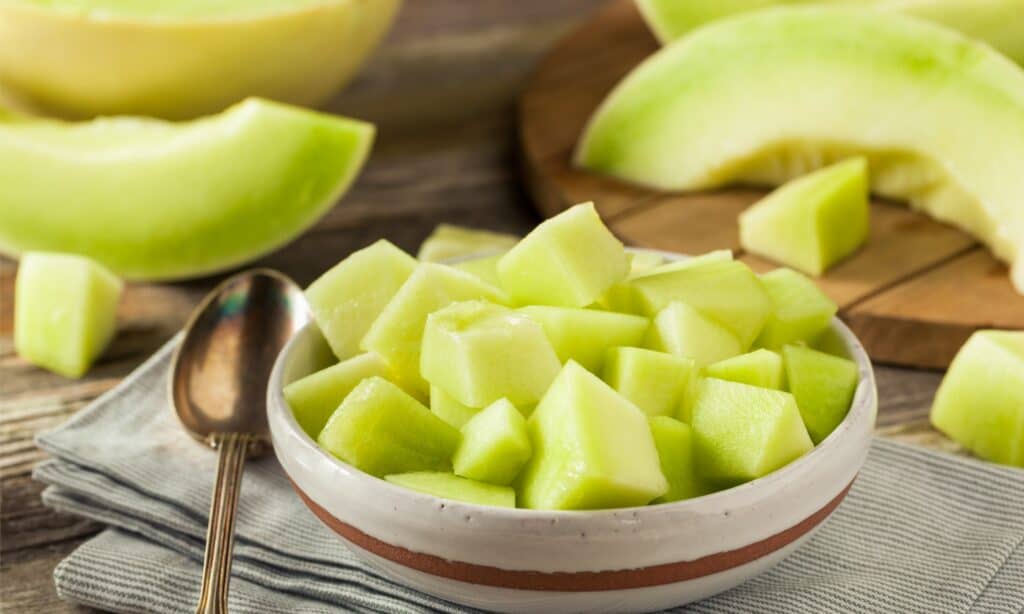
Cantaloupes remain one of the sweetest muskmelon varieties.
©iStock.com/bhofack2
The primary difference between muskmelon and cantaloupe slides and their classifications. This is because muskmelon refers to the overarching melon species that cantaloupes fall under. This means that all cantaloupes are technically muskmelons, but there are some muskmelon varieties that are not cantaloupes, including honeydew melons, casaba melons, and more.
Some studies suggest that cantaloupes belong to a specific melon species or subspecies, known as Cucumis melo var. melo. Muskmelons will always be classified as Cucumis melo, given the fact that they are the primary melon variety that many other melons stem from. Essentially, there are far more muskmelon types compared to cantaloupe types.
Muskmelon vs Cantaloupe: Description
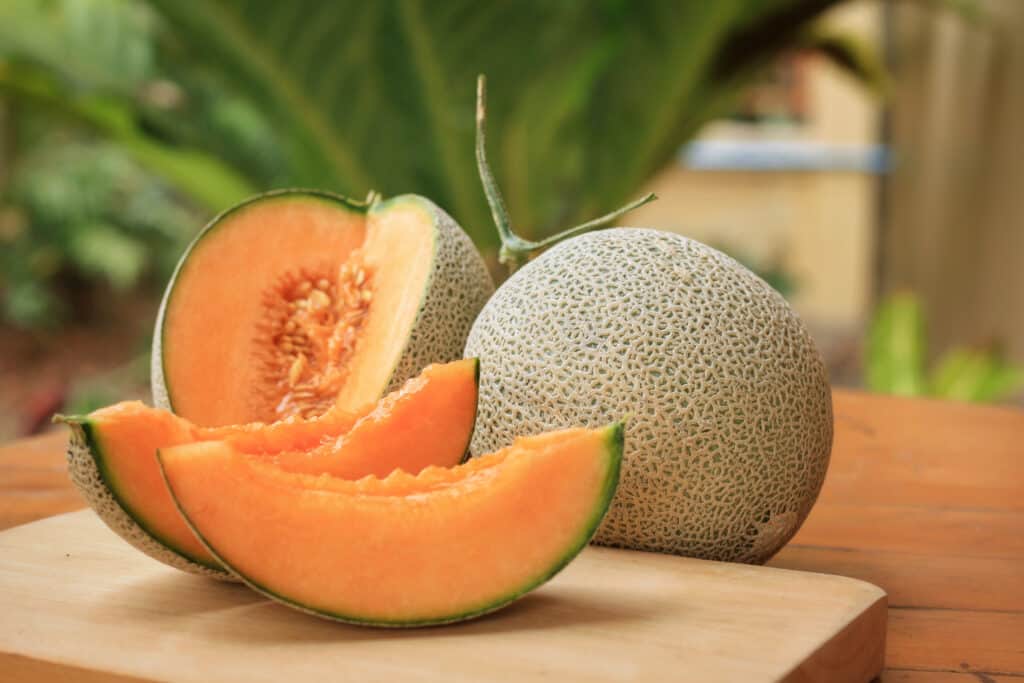
Cantaloupes are distinctly tan on the outside, and covered in a uniquely textured netting, and some other muskmelons also feature this.
©Kotcha K/Shutterstock.com
It can be very difficult to tell a cantaloupe apart from other muskmelon varieties, especially when you consider the fact that muskmelons vary widely in their appearance. For example, cantaloupes are distinctly tan on the outside, and covered in a uniquely textured netting, and some other muskmelons also feature this. However, many muskmelon varieties are smooth on the outside or bumpy rather than covered in a net-like appearance.
If you cut into a cantaloupe, you will be greeted by a very pleasant orange color and a sweet scent, something that not all muskmelon share with cantaloupes. In fact, many muskmelons are white or green in terms of their fruit color, and some muskmelons have no odor at all. This is in direct contrast to their name, as cantaloupes have a distinctly sweet musk to them that you can smell through the rind.
At the end of the day, there are enough muskmelon varieties to cover just about any type of melon, including bland ones and sweet ones. Cantaloupes remain one of the sweetest muskmelon varieties, though honeydew melons are sweeter overall. This is why it can be extremely difficult to pick out a muskmelon, especially when you consider just how different a can be!
Muskmelon vs Cantaloupe: Uses
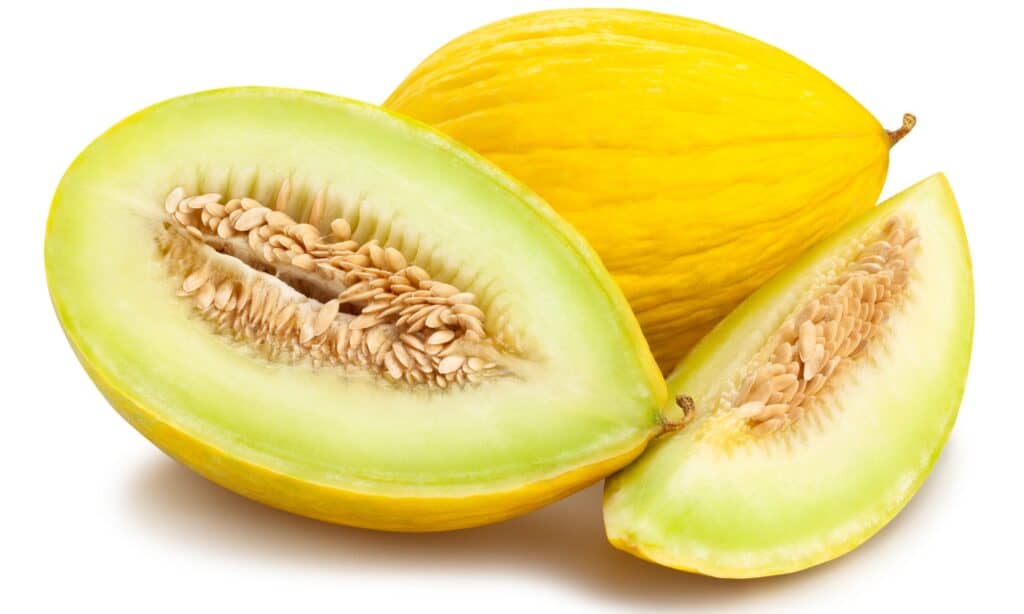
Most muskmelons contain a high variety of vitamins and minerals, and cantaloupes are high in vitamin C and vitamin A.
©iStock.com/bergamont
You can use muskmelon and cantaloupe interchangeably, but some muskmelon varieties are not edible. In fact, there are some muskmelons, such as the snake melon, that resemble cucumbers in flavor and appearance, making them far more bland than the average cantaloupe. However, most muskmelons contain a high variety of vitamins and minerals, and cantaloupes are high in vitamin C and vitamin A.
Muskmelon vs Cantaloupe: Origin and How to Grow
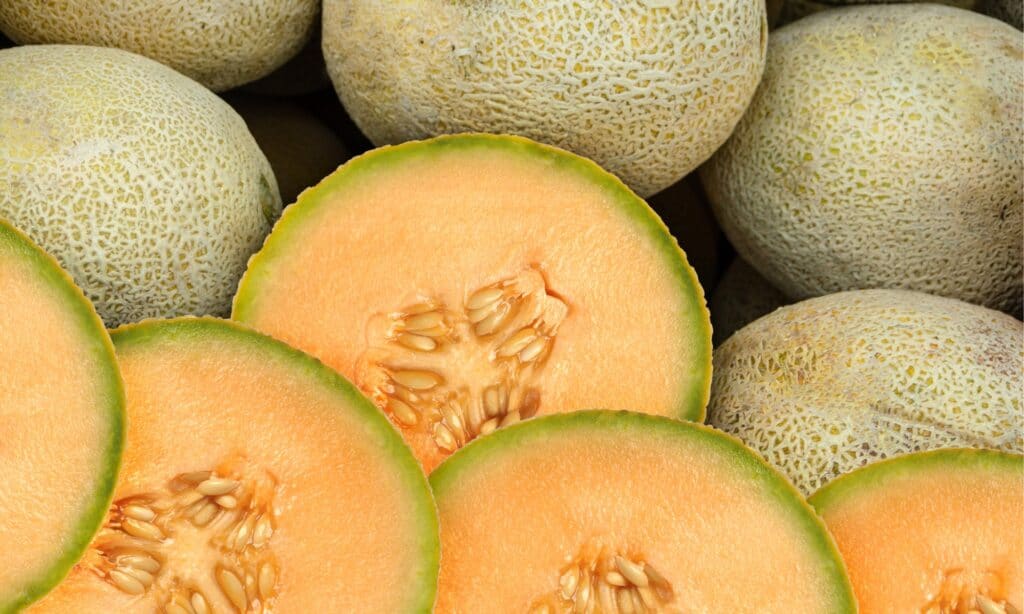
Many people speculate that cantaloupes originated in South America or Asia, but muskmelon varieties have unknown origins overall.
©iStock.com/agcuesta
There’s one fascinating fact that both muskmelons and cantaloupes share: the origins of just about all melon varieties is unknown. Many people speculate that cantaloupes originated in South America or Asia, but muskmelon varieties have unknown origins overall. However, there is evidence that melons were frequently traded in ancient times, and cantaloupe became widely popular in Europe sometime during the 1800s.
When it comes to growing muskmelons and cantaloupes, they both prefer full sun and soil that is full of nutrients. Most melon varieties enjoy trellises and the ability to climb, which may save you some garden space. Cantaloupes and muskmelons spread out easily and can overtake your other crops if you aren’t careful!
How Many Types of Cantaloupes Are There?

The Galia melon is a hybrid cantaloupe developed in Israel.
©Asio otus / CC BY-SA 3.0 – License
As we discussed, cantaloupes are part of a larger group of melons called muskmelons, named as such for their flavor and fragrance. In general, American cantaloupes have netted skin, while European kins have ribbed skin that’s light green in color. Other countries like France and Japan have their own types, as well as other Asian countries. Below are 21 different types of cantaloupes:
- Charentais (French)
- Savor (Hybrid Charentais)
- Sivan (Charentais type)
- Diplomat (Galia type; cross between Cantaloupe and Honeydew)
- Arancino (Italian, originating in Sicily)
- Sugar Cube (small single-sized)
- True Love (created at the University of New Hampshire)
- First Kiss (created at U. of New Hampshire, matures early)
- Sarah’s Choice (created at U. of New Hampshire)
- Golden Gopher (created at U. of Minnesota)
- Hannah’s Choice (created at Cornell University)
- Home Run (nod to Hammerin’ Hank Aaron breaking Babe Ruth’s record in 1974)
- Divergent (large American variety)
- Sweet Granite (grows well in mountains)
- Sensation (white variety from France)
- Pride of Wisconsin (juicy, salmon-colored outside)
- Halona
- Oregon Delicious
- Hearts of Gold (created in 1800s in U.S.)
- Hara Madhu (created at Punjab Agricultural University)
- Ichiba Kouiji (Japanese)
The photo featured at the top of this post is © iStock.com/Kwangmoozaa
Sources
- Sensory Properties and Consumer Acceptance of Cantaloupe Melon Cultivars, Available here: https://ift.onlinelibrary.wiley.com/doi/abs/10.1111/1750-3841.14724
- Grafting Snake Melon [Cucumis melo L. subsp. melo Var. flexuosus (L.) Naudin] in Organic Farming: Effects on Agronomic Performance; Resistance to Pathogens; Sugar, Acid, and VOC Profiles; and Consumer Acceptance, Available here: https://www.frontiersin.org/articles/10.3389/fpls.2021.613845/full
Thank you for reading! Have some feedback for us? Contact the AZ Animals editorial team.






